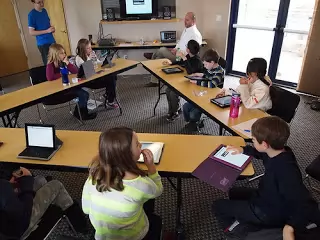Integrating technology in your lesson can be a hard task. I started with the basic use of Powerpoint in my lectures and I failed many times.
The huge improvement in technology today requires us to think creatively of ways to integrate technology in our classroom and our lessons. Banning cellphones, iPads and PDAs in schools is no longer the solution.
However, one of the problem that we, teachers, face is the guide on how to integrate these new and sprouting technology in our lesson.
Surely there are blogs and websites like this that talks about how to integrate technology in the classroom. But what we need is a reference, or training, about these new technology and how to use them in the classroom setting.
I’m a little ambitious so I will try to provide a list of the different ways to integrate technology in education.

 Using Powerpoint Presentations in a Lesson
Using Powerpoint Presentations in a Lesson
There is no surprise that Powerpoint comes out first in this list. Powerpoint has been used in teaching since around 2002.
Using Powerpoint in your lectures can leverage your effort and expenses on visual aids.
I use Powerpoint presentations in my lessons but I see to it that my slides are not dreadful. Slides that contain a lot of texts are dreadful and you should not do that. Use pictures and diagrams whenever possible.
3D Models Using 3D Softwares
Three dimensional models are surely a hit to your students. Who wouldn’t be delighted seeing a 3D model of a cholesterol molecule, the Eiffel Tower, the White House or the entire Earth itself?
3D models for historical places can be found online using Google Earth. your students can even make their own 3D models of the building found in your place.
Blogging for a Literature Class
Literature can be more fun if students not only make essays but show these essays to other people – their classmates, friends or relatives in other places. Blogging takes the dreadful look in your students eyes to an exciting aura.
Blogging can encourage your students to write because you are not the only one whom they expect to appreciate their work. Others can comment on their compositions online.
There are many websites that offer blogging for free like Google’s Blogspot and Ning.
Use of Educational Apps on Tablets and iPads
Many students bring their tablets and iPads in school and expect to use them either as a notebook or in playing video games.
Teachers are also seeing the opportunity to use these tablets in lessons. The mirage of apps in the App Store and Google Play gives birth to Educational Apps.
Apps like MathBoard, Monster Anatomy and Star Walk are only three of these apps. You can find more apps categorized as educational from Apple.
Video Conferencing
This may sound out of bounds but video conferencing in the classroom is actually possible. A teacher has already tried this by video conferencing US students with Chinese students.
Video conferencing can be used in interviewing a resource person from another state or country or even with another school in your locality.
Educational video conferencing can be accomplished using Skype or Google+ Hangout.
Conclusion
These are only five among the many technologies that can be integrated in your classroom. Be adventurous and explore other technologies that sprout and apply them in your lessons.
